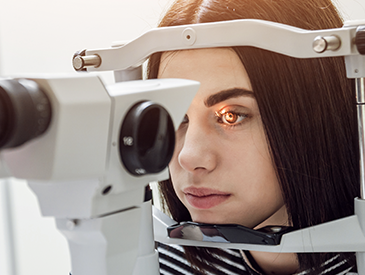How Can Environmental Factors Trigger or Aggravate Dry Eye?
Blog:How Can Environmental Factors Trigger or Aggravate Dry Eye?

How Can Environmental Factors Trigger or Aggravate Dry Eye?
Dry eye syndrome is a common condition that affects millions of people, causing discomfort, blurry vision, and irritation. While underlying health issues or aging may play a role, environmental factors often trigger or worsen symptoms. Understanding how your surroundings impact your eyes can help you manage dry eye more effectively.
Environmental Triggers of Dry Eye
Dry, Windy, or Smoky Air: Exposure to dry air, wind, or smoke can accelerate tear evaporation. Whether you're near a fan, walking on a breezy day, or exposed to cigarette smoke or wildfires, these conditions can dry out the tear film that protects your eyes.
Low Humidity: Air-conditioned and heated environments, like office buildings and airplanes, often have low humidity. This lack of moisture in the air can cause your tears to evaporate more quickly than normal, leaving your eyes dry and irritated.
Prolonged Screen Time: Staring at digital screens reduces blink frequency, which leads to less tear distribution. This results in eyes that feel gritty, tired, or even watery—an overcompensation for dryness.
Pollution and Allergens: Environmental pollutants and allergens, such as pollen or dust, can inflame the eyes and disrupt the tear film. This irritation can both mimic and aggravate dry eye symptoms.
Contact Lens Use: Wearing contact lenses in unfavorable environmental conditions can increase your risk of dry eyes. Dry air or poor air quality can make lenses feel uncomfortable and interfere with normal tear function.
Other Common Causes of Dry Eye
While environmental factors are often to blame, other underlying causes include:
Aging, particularly post-menopause
Medical conditions like Sjögren’s syndrome, diabetes, or rheumatoid arthritis
Medications such as antihistamines, antidepressants, and blood pressure drugs
Eye surgeries, especially LASIK
Vitamin A deficiency
Meibomian gland dysfunction or blepharitis
When to See an Eye Doctor
If you’re frequently experiencing symptoms such as a burning, stinging, or scratchy sensation, redness or sensitivity to light, blurry vision that improves with blinking, or excessive tearing as a response to dryness, it may be a sign of dry eye syndrome. This condition can significantly affect your daily comfort and long-term eye health.
Seeking a professional diagnosis is essential to uncover the root cause and develop a personalized treatment plan. Your eye doctor may recommend options such as artificial tears, prescription eye drops, punctal plugs, lifestyle adjustments, or advanced in-office treatments to enhance tear production and improve eye moisture retention.
Take the First Step Toward Lasting Comfort
Environmental conditions play a significant role in triggering or worsening dry eye symptoms. If you're struggling with eye discomfort and suspect your surroundings may be to blame, don’t wait for relief to come on its own. The right diagnosis and treatment plan can make all the difference.
Schedule your dry eye evaluation with Texas State Optical and take the first step toward lasting comfort and clearer vision. Visit our office in Magnolia, Texas, or call (281) 946-2020 to book an appointment today.


